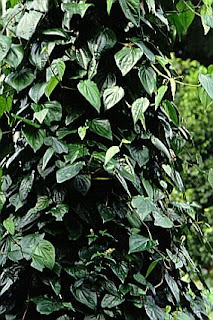
English Name : Greater Ammi
Family : Apiaceae
Origin : Northeastern Africa, Eurasia
Description
An erect, branching annual herb, up to 1.5 m in height, sometimes grown as a winter ornamental. Leaves oblong, 6-20 cm long (excluding petiole), broad ternate or pinnate: leaflets lanceolate, obtuse to acute; flowers white in loose compound umbels; fruits oblong, 1.5-2.0 mm long and 1 mm or less broad.
Habitat
Almost any soil, heavy or light, is ok. Minimal water requirements once established.
Parts Used : Fruit, essential seed oil and plant
Herb Effects
Induces photosensitization (fruit); Contraceptive, diuretic and tonic (Seed)
Active Ingredients
Ammoidin, ammedin and majudin (fruit); quercetin (leaves); 5-methoxy-psoralen, 8-methoxy-psoralen, angelicin, furocoumarin, isorhamnetin, khellin, luteolin, luteolin-7-glucoside, oleic acid, palmitic acid, pimpinellin, umbelliferone, xanthotoxol (plant); bergapten, heraclenin, imperatorin, isoimperatorin, isopimpinellin, isoquercetin, oxupeucedanin, tannin, xanthotoxin (seed).
Medicinal Use
In leukoderma and psoriasis (plant decoction); in asthma and angina (Seed infusion); in toothache (Seed decoction)
Dosage
50 mg three times daily or applied externally as one per cent liniment followed by exposure of affected areas to sunlight or ultravoilet light for 2-4 hours.
Reference
Habitat
Almost any soil, heavy or light, is ok. Minimal water requirements once established.
Parts Used : Fruit, essential seed oil and plant
Herb Effects
Induces photosensitization (fruit); Contraceptive, diuretic and tonic (Seed)
Active Ingredients
Ammoidin, ammedin and majudin (fruit); quercetin (leaves); 5-methoxy-psoralen, 8-methoxy-psoralen, angelicin, furocoumarin, isorhamnetin, khellin, luteolin, luteolin-7-glucoside, oleic acid, palmitic acid, pimpinellin, umbelliferone, xanthotoxol (plant); bergapten, heraclenin, imperatorin, isoimperatorin, isopimpinellin, isoquercetin, oxupeucedanin, tannin, xanthotoxin (seed).
Medicinal Use
In leukoderma and psoriasis (plant decoction); in asthma and angina (Seed infusion); in toothache (Seed decoction)
Dosage
50 mg three times daily or applied externally as one per cent liniment followed by exposure of affected areas to sunlight or ultravoilet light for 2-4 hours.
Reference
















